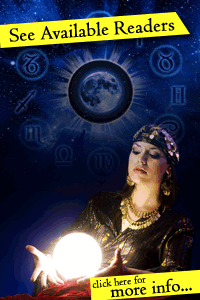Credit Card Callers
OPERATOR ASSIST
Available 10am to 6pm daily for bookings/Issues
Billed as Access Positive
*You must accept our Terms of Use

Home > Psychic Blog > Free Horoscopes And How They Are Interpreted In The West
Free Horoscopes And How They Are Interpreted In The West
Astrology is a very complex, yet truly interesting field. It believes that a person's fortunes, as well as his demeanor, are somehow determined by the positioning of the stars, planets and other celestial bodies. A horoscope refers to a chart or diagram that represents and identifies the positions of celestial bodies such as the moon, sun, stars and planets, at the time of an event, or during the time of a person's birth. Here are a few interesting snippets of how free horoscopes are interpreted in Western astrology.
Where Is The Word “Horoscope” Derived From?
The word horoscope is derived from the Greek word “horoskopos” which means “a look at the hours”. Other famous terms for horoscope include Radical Chart, Sky Map, Chart Wheel, Celestial Map, Astro Chart, Cosmogram and others. The horoscope is used to regard to celestial events that relate to the point in time it represents.
How Do You Safely Interpret A Horoscope/
Free horoscopes generally act like stylized maps of the solar system and celestial bodies, as they indicate how the sun, moon and other planets are arranged over a specific location, at a particular moment in time. In a horoscope, the positions of the actual planets, stars and other heavenly bodies are placed in a chart, and an angular relationship is determined between the celestial bodies, which is referred to as an “aspect”. A free horoscope's interpretation though varies with each culture, tradition and geographic location.
How Western Astrologers Create A Horoscope
In Western traditions, the astrologer will first try to determine the exact time and place of the person's birth, or when an event happened. This means the astrologer tracks local standard time, usually adjusting for any daylight savings time or “war” times. The actual time tracked will then be converted into GMT time, or Greenwich Mean Time, as well as Universal Time. Next, the astrologer consults a set of tables, which are called an “ephemeris”, which lists the exact location of the moon, sun and the planets or stars for a particular year or date. The astrologer will then either add or subtract the difference between the longitude of Greenwich and the longitude of the location in question, to find the “true local mean time” or LMT of the person at the place of birth. This also indicates where the planets will be visible above the horizon, during the time and place in question.
The Western Horoscope's Twelve Zones
The Western horoscope generally refers to twelve (12) zones of the celestial longitude during one cycle of the Earth during its orbit to the sun. The 12 zones serve as method for dividing the months in a year, and the 12 zones are often addressed by twelve constellation names such as – Aries, Taurus, Gemini, Cancer, Leo, Virgo, Libra, Scorpio, Sagittarius, Capricorn, Aquarius and Pisces.
The free horoscope of Western astrology is basically interpreted in a similar manner as the Chinese and East Asian zodiac charts. Since a horoscope is not often fully analyzed by academic or scholarly circles, most people today have limited knowledge of it, and many individuals also use it just for fun. Nevertheless, a horoscope will offer a lot of insights on the relationship between celestial bodies and human life. Thus, this branch of astrology is certainly moving in the right direction, especially when it comes to studying how the heavens are affecting, or influencing, a person's life.
Disclaimer
This psychic site and its owners are not liable for any direct, indirect, incidental, consequential, or punitive damages arising from using this site, the psychic contractors listed on it, or its content. By giving us your email address you agree to allow us to send you occassional maketing materials. We will never pass your details to another company.
Terms of Use
You must accept and agree to our Terms of Use before using our services.



















